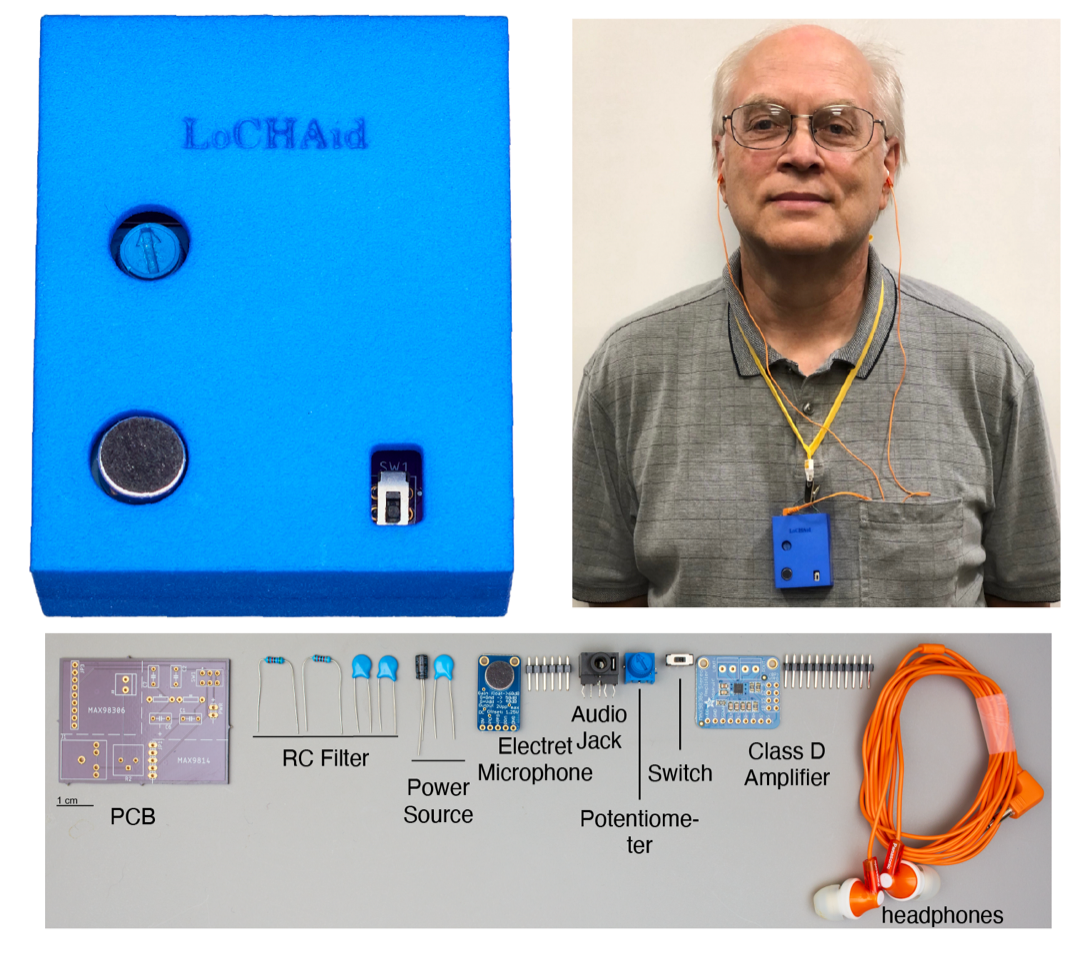This hearing aid technology uses widely available, off-the-shelf electric components to provide an accessible and affordable therapy for age-related hearing loss (ARHL). Components for the LoCHAid hearing aid cost less than $1 (including batteries) when purchased in bulk quantities. The power source requirement is small (3 to 5.5 V) and can be provided from a variety of sources such as rechargeable AAA, AA, coin cell, and lithium-ion batteries.
Designed as an over-the-counter self-serviceable solution for patients with mild to moderate ARHL, Georgia Tech’s minimalist device resembles wearable music players (components are housed in a 3D-printed case) rather than conventional behind- or in-the-ear hearing aids.
The design approach uses electronic filters to shape frequency response—a less expensive method than the digital signal processors used in many modern hearing aids. Frequency response shows selectable gain in the range of 4 to 8 kHz and significantly limited total distortion (1 percent). With cellphone-based software that is easily customizable to enable self-fitting, the device offers digital enhancements including noise reduction and selective gains over a wide frequency range (200 to 1,000 Hz).
- Low cost: Uses widely available components that cost 98 cents when purchased in bulk quantities
- User friendly: Easier to fit—and keep track of—than conventional behind- and in-the-ear hearing aids
- Accessible: Designed for easy manufacture and repair in locations where conventional hearing aids are priced beyond the reach of most citizens
- Effective: Meets most World Health Organization targets for hearing aids for mild to moderate age-related hearing loss
- Easy to manufacture: Constructed from mass-produced open source electronics, eliminating the need for specially made parts
- Hearing aids
- Audiology research
Hearing loss is one of the leading causes of disability in elderly people, both in developing and developed nations. Although hearing aids have been demonstrated to increase quality of life, their uptake and retention remain low. Cost is a significant obstacle. In the United States, an average pair of hearing aids costs patients $4,700 for reasons that include proprietary software and hardware, distribution costs, and coverage refusal by private insurers and public policy programs like Medicare. In developing countries, additional factors for low use include their limited functionality in harsh environmental conditions and the need for audiologists and specialized equipment for fitting.
Alternative low-cost solutions—over-the-counter hearing aids and personal sound amplifiers—can still cost up to $500 and do not offer the acoustic characteristics needed to meet ARHL. Additional drawbacks include limited high-frequency gain, dangerous levels of amplifications, excessive internal noise, and high distortion.
Georgia Tech’s innovation offers the potential to address challenges in accessibility and affordability for hearing aid technology worldwide.

The LoCHAid is built from standard electronic components housed in a 3D-printed shell. The prototype resembles a wearable music player.
